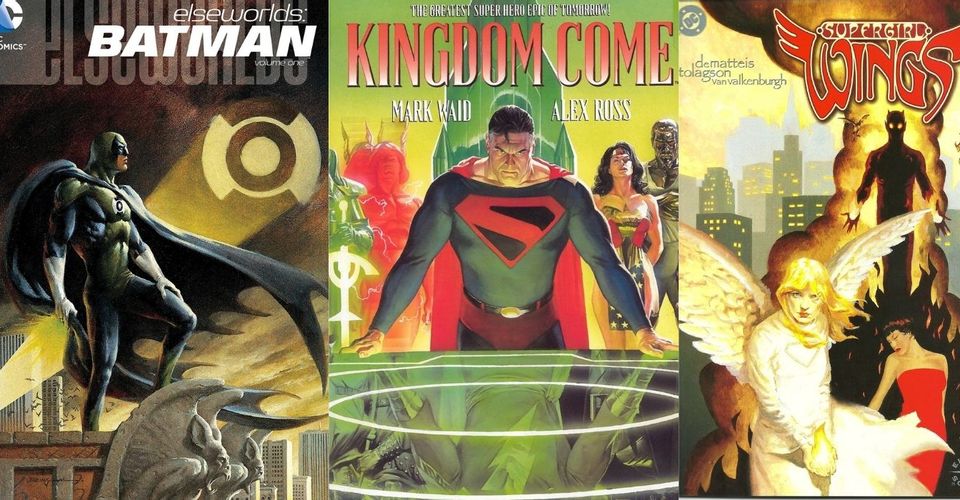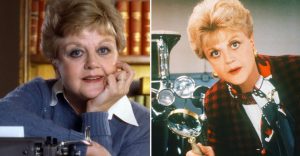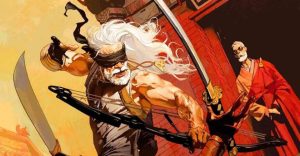10 Best DC Comics Elseworlds

Elseworlds have come to be very much understood as any old alternate universe using DC Comics characters. Often when audiences refer to Elseworlds, they’re thinking of seminal classics like DC: The New Frontier (2004) or innovatively modern additions such as the franchise stemming from Injustice: Gods Among Us (2013). They very rarely mean the series of books published specifically under DC Comics’ Elseworlds imprint, which had run from 1989 to 2003.
Some of these fascinating stories have seen animated adaptations, some merely exist to be enjoyed by dedicated readers but all are worth taking a look at and seeing beloved heroes beating the odds in new and exciting ways.
Batman: In Darkest Knight (1994)

One of the more daring changes in status quo presented throughout this series of tales, Mike W. Barr and Jerry Bingham’s one-shot asks readers to imagine a world in which Bruce Wayne had been chosen as Green Lantern instead of Hal Jordan. That single detail, in turn, causes a domino effect felt across the entire DC Universe and explores the psychology of a Batman with the kind of power he had never once possessed before.
Batman: In Darkest Knight comes highly recommended for any fan eager to see a combination of Green Lantern’s light and Batman’s dark shadows. More so, it’s a fascinating profile of Bruce Wayne’s strength and unchanging motivation in the face of a whole new world.
Lobo (1993) Annual #2

Throughout 1994, DC Comics released several annuals for all their ongoing titles united by one common theme: Elseworlds. A comedic take on the concept, the second Lobo annual – entitled “A Fistful Of Bastiches”, in typical Lobo parlance – presents an anthology of non-continuity tales putting ‘the main man’ in the role of the protagonist of a variety of Western movies, all written by Alan Grant and drawn by various artists long associated with the book.
More than an incredible read for any fan of Lobo, the annual is surely the funniest Elseworlds available and deserving of counting among some of the best stories out there.
Green Lantern: 1001 Emerald Nights (2001)

Written by Terry LaBan and illustrated by Rebecca Guay, the story takes its cues – as the title suggests – from the folklore found within 1001 Arabian Nights and features Scheherazade as a Green Lantern come to stop the reign of a sultan known as Ibn Rayner, only to find out that the young man is merely the puppet of his adviser, who wields a genie styled after Sinestro. As Scheherazade tells the sultan the tale of reluctant hero Al Jhor Dan and his green lamp, she hopes to open the sultan’s eyes to the cruelty around him.
Not only does this one-shot expertly blend the modern mythology of superheroes with the mystical and ancient, but it’s also one of the two Elseworlds to have ever featured Green Lanterns as central characters. Due to the scarcity of stories focused on those characters, this can easily be considered a must-read through that quality alone.
Kingdom Come (1995)

One of the most famous Elseworlds to have ever graced the imprint, the 1995 four-issue limited series has gained something of a cult following among readers since its publication. Painted by Alex Ross and written by Mark Waid, the deconstructive story is that of the conflict between generations of heroes with opposing ideals of vigilantism. At the center of it all, lies a world-ending plot that might very well necessitate unthinkable sacrifice.
Though it is not the first nor the last story to analyze and contrast the shifts in the public perception of superheroes, Kingdom Come is at the very least worth reading for its visually stunning elements and beloved by fans status.
Conjurors (1999)

The sole magical addition to the Elseworlds catalog, the three-issue limited series is a truly unique experience in an ocean of tales rife with DC’s biggest names. Brought to life by the talents of Chuck Dixon and Eduardo Barreto, Conjurors features the likes of the Phantom Stranger, Deadman, Madame Xanadu, the Challengers of the Unknown, and all manner of major players familiar to lovers of the obscure and arcane parts of the DC Universe.
Arguably one of the best Elseworlds to have come out of the imprint at its height, Conjurors offers an exciting departure from the mundane that’s fully accessible to old and new readers alike.
Green Lantern: Evil’s Might (2002)

Trading the fantastical for the grounded reality of New York City in 1888, Evil’s Might tells the tale of political cartoonist Kyle Rayner taking on the identity of Green Lantern to combat injustice while falling in love with suffragette Carol Ferris, dealing with her policeman fiance Hal Jordan and taking on small-time crime boss Alan Scott. Co-written by Howard Chaykin and David Tischman with pencils by Marshall Rogers, the three-issue miniseries is a particularly interesting outing in the annals of alternate universes based around real life.
An often forgotten story, Green Lantern: Evil’s Might encourages readers to lose themselves in the world of so long ago woven between the pages and presents admirably true-to-form characterization even for the heroes put in the most surprising of roles.
Superman: Red Son (2003)

Recently adapted into the 2020 animated film, most longtime fans are intimately familiar with the intricacies of this particular three-issue miniseries. Presenting the tale of a Superman raised in the Soviet Union are Mark Millar and a team of superstar artists, giving the series an instantly recognizable look as the book explores a world nearly identical to our own before it diverges during the Cold War with the introduction of the Superman.
Often hailed as one of the best Elseworlds and critically acclaimed since its release, Red Son is one of those vital reads any DC Comics fan is encouraged to eventually undertake.
Supergirl: Wings (2001)

Featuring themes of religion and philosophy, the Supergirl: Wings one-shot is arguably one of the most complex stories to have ever come out of Elseworlds. On the surface, the premise of J.M. Dematteis and Jamie Tolagson’s tale is rather clear-cut: Matrix, an angel assigned to watch over Linda Danvers, has become disillusioned with humanity and fights to find her way with the help of the Phantom Stranger. However, the obstacles encountered along the way make Matrix further question the existence of destiny to begin with and raise the possibility of her belonging with flawed humanity instead.
For fans familiar with the many incarnations of Supergirl over the years, this particular story is the perfect reconciliation between the sometimes-opposing takes on the character but beyond that, Wings is also a thoroughly compelling narrative for anyone willing to give it a try.
JSA: The Liberty Files (2004)

Originally published as JSA: The Liberty File (2000) and its sequel JSA: The Unholy Three (2003), each a two-issue limited series, The Liberty Files features the Justice Society of America as covert government operatives during World War II. Created by Dan Jolley and Tony Harris, the fan-favorite series is one of the few Elseworlds to have gotten a sequel and is often praised for its daring and exciting portrayal of characters who have been very rarely seen in the limelight, such as Rex Tyler and Terry Sloane – the original Mister Terrific.
Fit for more than just dedicated fans of the Justice Society, The Liberty Files presents a successful balancing act between fast-paced action and quiet, tragic scenes handled with a taste for the real and complex.
The Golden Age (1993)

One of the only Elseworlds to influence canon continuity to the point that certain elements have become inseparable from the Justice Society of America’s history as a whole, James Robinson and Paul Smith’s four-issue limited series is often hailed as a masterpiece of the medium. The book presents the fall of the JSA at the hands of the HUAC and explores the relationship between superheroes and the government that had built them up only to throw them aside with the advent of McCarthyism in the early 1950s.
Before Kingdom Come and The New Frontier and any other titles that explore similar premises, there was The Golden Age. Invariably seen by fans as an absolute must-read, the book also serves as a fantastic introduction to the Justice Society of America for anyone interested in the showcased themes.
About The Author

















